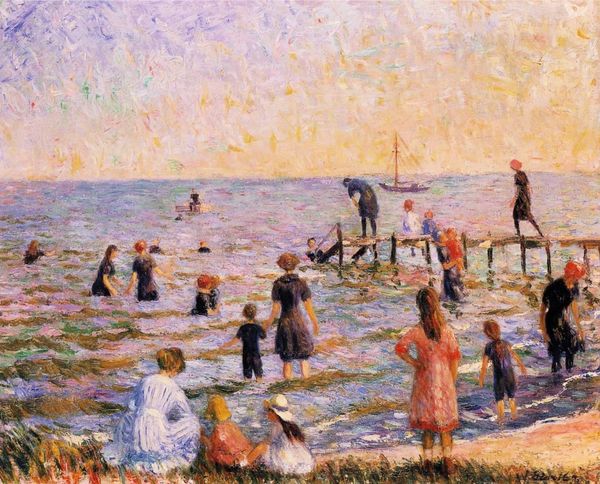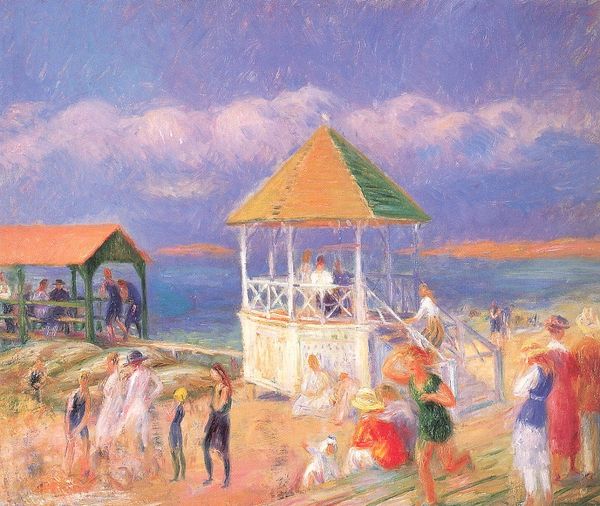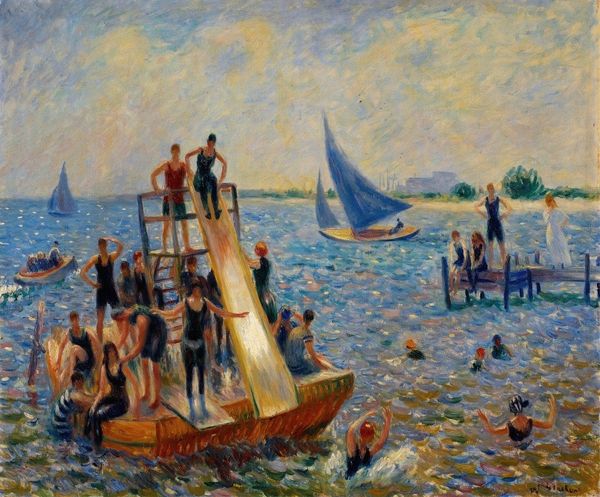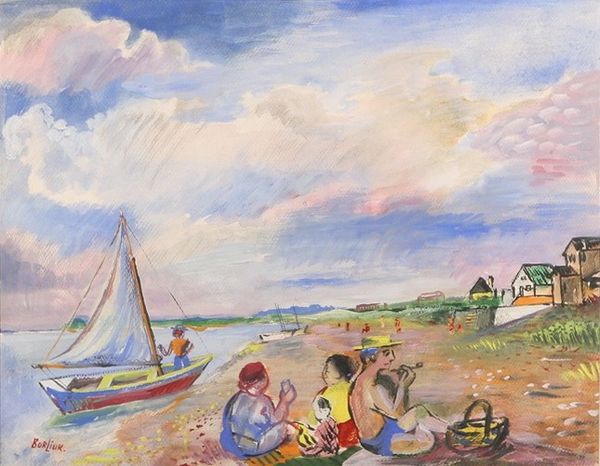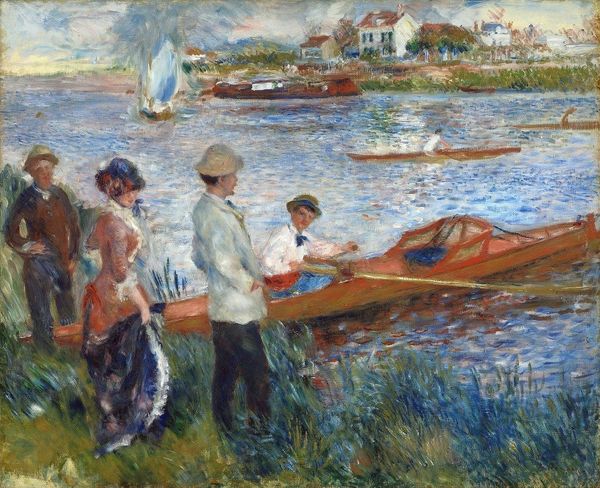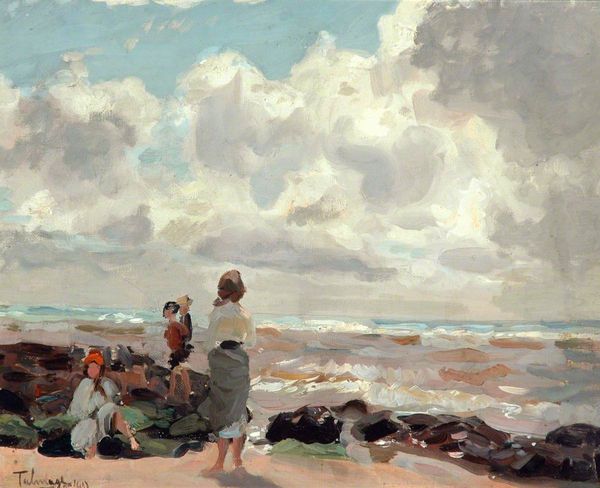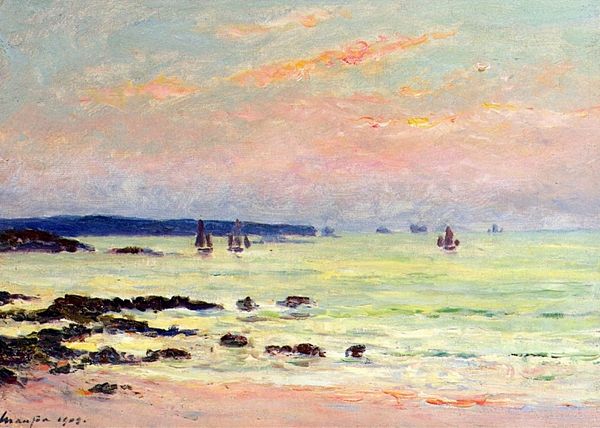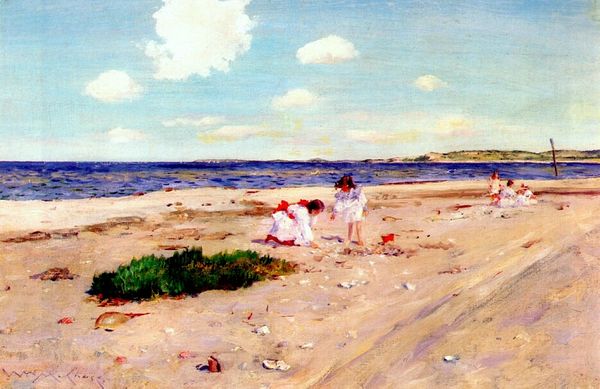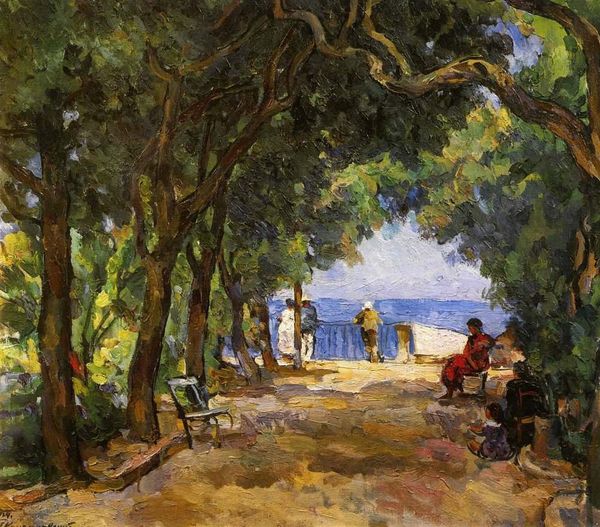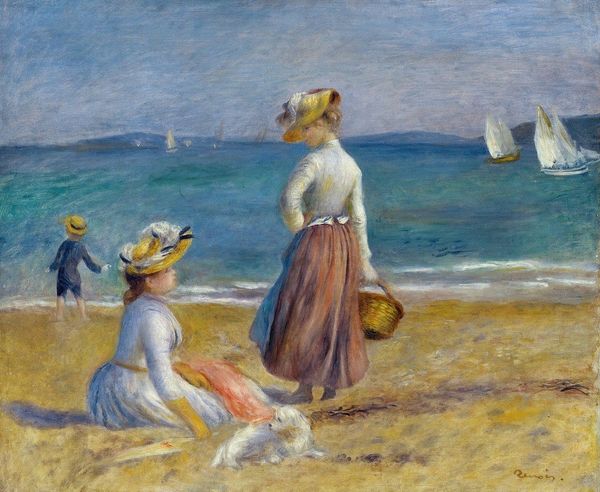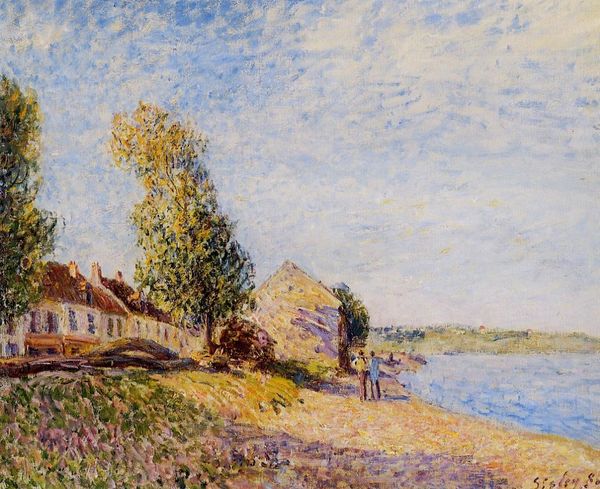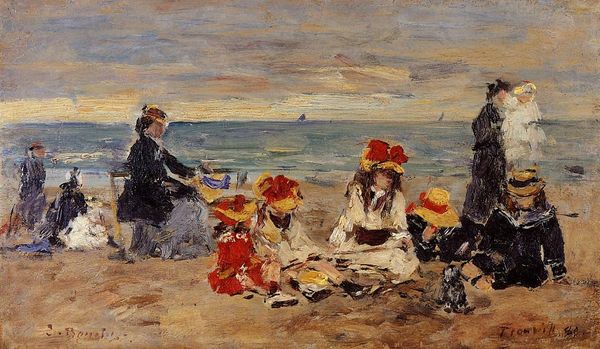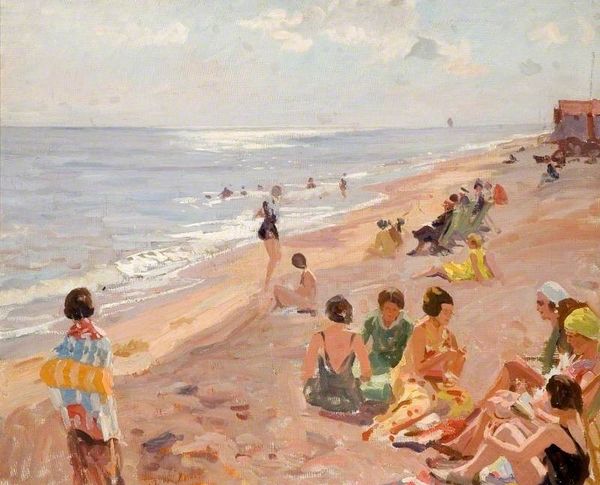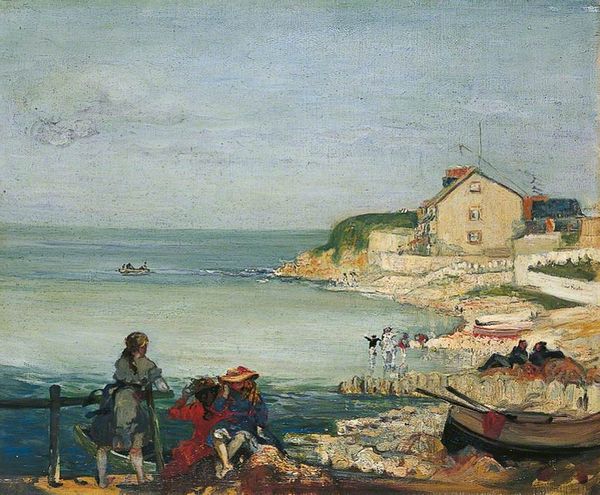
Copyright: Public domain
Editor: This is "Beach Side," an oil painting by William James Glackens, painted in 1913. It really strikes me as capturing a perfect summer day. How do you interpret this work? Curator: It certainly does evoke a feeling of leisure and warmth. Beyond that, though, consider the pier extending into the water – a very common image found in art. What does that structure symbolize to you? Is it a connection? Or perhaps a division? Editor: I suppose it could be both? It's a physical connection to the sea, but also a boundary between the land and the water... I never really thought about it that way. Curator: And what about the positioning of the figures? Notice how some are on the shore, in bright, open colors, and others are gathered near that shaded building. The shadow cast can also signal protection or something else entirely. It speaks to social structures, doesn’t it? Do the colors convey emotionality here? Editor: Definitely. The warm tones used on the beach side suggest happiness and activity, while the muted tones where some people rest imply calm reflection, I’d say. Is this contrast typical? Curator: Precisely. This is a potent strategy for reflecting a duality: activity and repose. By linking these to spaces with light and shadow, he connects viewers' experiences to that cultural meaning. Consider too the sails on the horizon. To what lands do they refer? What does Glackens imply about his nation in this carefully staged seaside drama? Editor: Wow, I had just thought it was a simple beach scene! Seeing the painting as something packed with historical and psychological meanings really makes me appreciate it in a whole new way. Curator: Indeed! Everyday life rendered carefully offers insight into more profound cultural narratives and personal impressions. These observations hopefully deepen and personalize our appreciation.
Comments
No comments
Be the first to comment and join the conversation on the ultimate creative platform.
